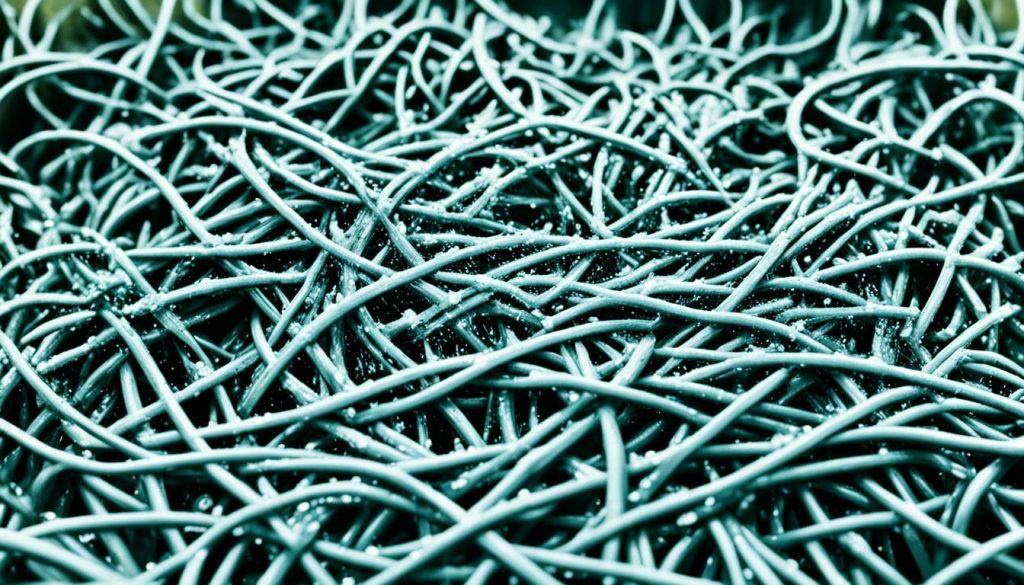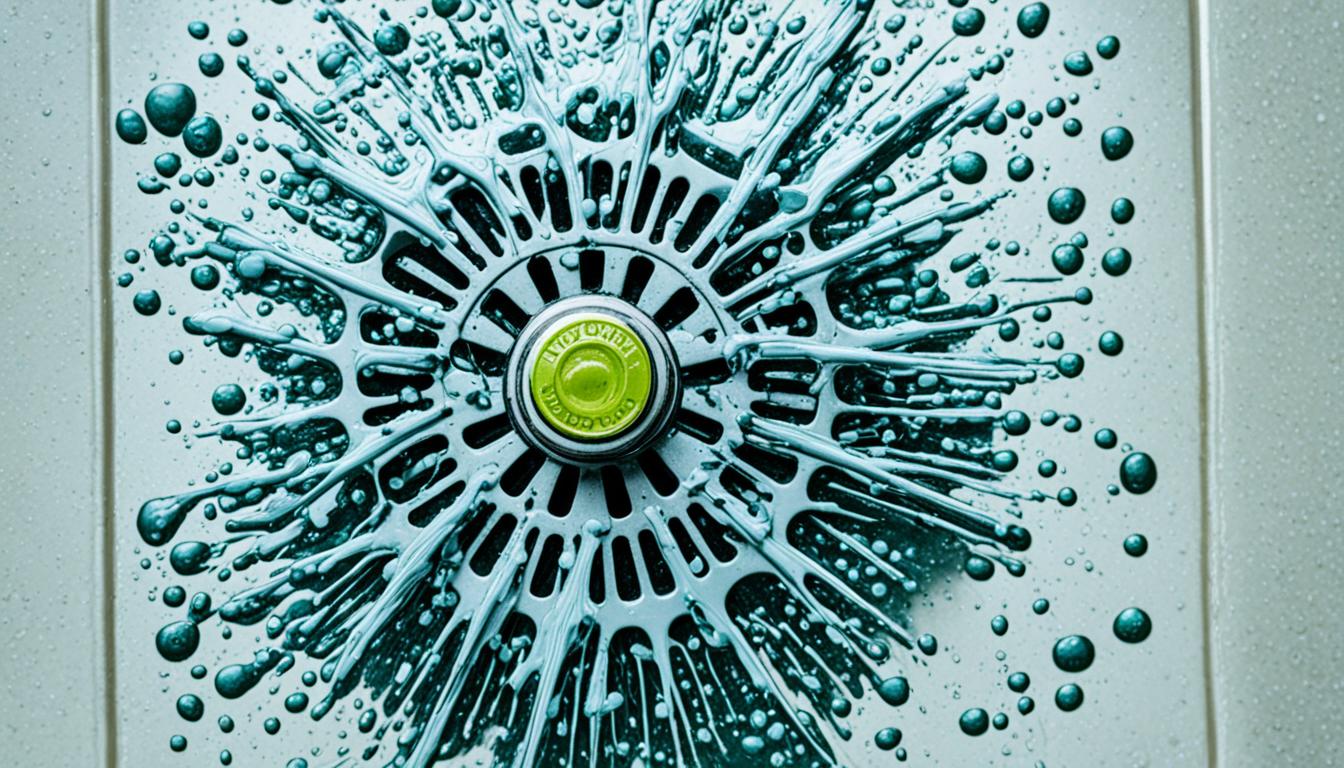Normal hair shedding is a natural part of the hair’s life cycle. Understanding what is considered normal can help ease concerns about hair loss in the shower.
When it comes to shedding hair while showering, it is generally normal to lose anywhere between 50 to 100 hairs per day. This range can vary depending on factors such as hair thickness and length.
Various factors can influence the amount of hair loss experienced during showering. The frequency of brushing and shampooing, as well as hair length and thickness, can impact the number of strands that fall out. It’s important to note that the amount of hair shed during washing can vary from person to person.
While shedding a certain amount of hair in the shower is normal, there are signs that may indicate abnormal hair loss. Bald spots, patchiness, significant changes in hair thickness, or hair loss in areas other than the scalp should be a cause for concern.
To manage and reduce excessive hair shedding, you can try some helpful tips. Cutting down on the frequency of washing, using a wide-tooth comb instead of a brush, and avoiding tight hairstyles can minimize hair loss. Protecting hair from heat styling and maintaining a balanced diet can also contribute to overall hair health.
If you’re concerned about excessive hair shedding or notice any signs of abnormal hair loss, it’s best to consult with a dermatologist for a proper evaluation and guidance.
Understanding what is considered normal for your hair and taking steps to maintain its health can help you manage hair shedding and ensure overall hair well-being.
Factors That Influence Hair Fall in the Shower
When it comes to hair loss while showering, there are several factors that can influence the amount of hair you see falling out. Understanding these factors can help you better manage your expectations and determine what is considered normal for you.
The Frequency of Brushing and Shampooing
The frequency at which you brush and shampoo your hair can impact the number of strands that fall out in the shower. Generally, those who brush and shampoo their hair more often may see fewer strands of hair in the shower. This is because regular brushing and shampooing help to remove loose hair and prevent it from accumulating in the shower drain.
Hair Length and Thickness
Your hair’s length and thickness can also play a role in the amount of hair shed during showering. Individuals with shorter and thinner hair tend to shed less hair in the shower compared to those with thick, long hair. This is because shorter and thinner hair strands are less prone to breakage and are less likely to be caught in the shower drain.
Personal Hair Care Habits
It’s important to note that the amount of hair shed in the shower can vary from person to person. Factors such as how you care for your hair, the products you use, and your overall hair health can influence hair loss during showering. Keeping track of your hair loss patterns and comparing it to your own history can provide better insight into what is considered normal for you.
It’s important to remember that a certain amount of hair loss while showering is normal, but if you are experiencing excessive hair loss that is causing concern, it is recommended to consult with a dermatologist or healthcare professional for further evaluation and guidance.
How Much Hair is Normal to Lose in the Shower?
Signs of Abnormal Hair Loss
While shedding a certain amount of hair in the shower is normal, it is essential to be aware of signs that indicate abnormal hair loss. Paying attention to these signs can help identify potential underlying issues and seek appropriate treatment. Here are some signs to watch out for:
- Bald spots and patchiness: Missing patches of hair or visibly thinning areas on the scalp may indicate abnormal hair loss. These bald spots can vary in size and shape.
- Losing large clumps of hair: Experiencing an excessive amount of hair falling out during showering may be a cause for concern.
- Scalp irritation and itchiness: If you notice persistent scalp irritation, redness, or itchiness, it may be a sign of an underlying scalp condition contributing to hair loss.
- Hair loss outside the scalp: Losing hair from areas other than the scalp, such as eyebrows, eyelashes, or body hair, may indicate abnormal hair loss and should be evaluated by a healthcare professional.
If you notice any of these signs or experience excessive hair shedding lasting longer than 2 to 4 weeks, it is recommended to seek medical attention. Additionally, significant changes in the thickness of your ponytail or overall hair density should also be discussed with a healthcare professional. Consulting with a doctor or dermatologist can help determine the underlying cause of abnormal hair loss and guide you towards appropriate treatment.

Remember, everyone’s hair shedding patterns can vary, and what is considered normal for one person may be abnormal for another. Seeking professional advice is crucial to address any concerns and maintain optimal hair health.
Tips for Managing Hair Shedding in the Shower
While shedding a certain amount of hair in the shower is normal, there are steps you can take to manage and reduce excessive hair shedding. Here are some tips to help minimize hair loss during showering:
1. Reduce the frequency of washing and conditioning your hair
Washing your hair every day can strip it of its natural oils, leading to dryness and breakage. Try to limit washing and conditioning to every other day or two to three times a week. This can help prevent unnecessary hair fall in the shower.
2. Use a wide-tooth comb instead of a brush
When detangling your hair after showering, opt for a wide-tooth comb instead of a brush. Brushes can cause more breakage and hair loss, especially when the hair is wet and fragile. A wide-tooth comb helps minimize tugging and breakage, reducing hair shedding.
3. Avoid tight hairstyles and use gentle hair accessories
Tight hairstyles such as ponytails, buns, and braids can put excessive tension and strain on the hair, leading to hair breakage and loss. Instead, opt for looser hairstyles that minimize pulling and tension on the hair. Additionally, use gentle hair accessories like fabric-coated or soft hair elastics to prevent unnecessary hair fall.
4. Limit the use of heat styling tools
Excessive heat from styling tools like flat irons, curling irons, and blow dryers can damage the hair shafts, causing them to become weak and prone to breakage. Try to minimize the use of heat styling tools and opt for heat-free hairstyles whenever possible to reduce hair shedding in the shower.
5. Protect your hair from the sun
The sun’s UV rays can weaken the hair and contribute to hair loss. When spending time outdoors, protect your hair by wearing a hat or using products that contain UV filters. This can help maintain the health of your hair and reduce hair shedding caused by sun exposure.
6. Maintain a balanced diet and address underlying health conditions
A healthy diet rich in vitamins, minerals, and proteins is essential for promoting hair health and reducing hair fall. Additionally, addressing underlying health conditions such as hormonal imbalances or nutritional deficiencies can help manage excessive hair shedding. Consult with a healthcare professional or a nutritionist for personalized advice.
By following these tips, you can effectively manage hair shedding in the shower and promote overall hair health.

| Tips for Managing Hair Shedding in the Shower |
|---|
| Reduce the frequency of washing and conditioning your hair |
| Use a wide-tooth comb instead of a brush |
| Avoid tight hairstyles and use gentle hair accessories |
| Limit the use of heat styling tools |
| Protect your hair from the sun |
| Maintain a balanced diet and address underlying health conditions |
Conclusion
Shedding a certain amount of hair in the shower is a normal part of the hair’s natural life cycle. On average, individuals can expect to lose between 50 to 100 hairs per day. However, the amount of hair shed can vary based on factors such as hair thickness, length, and personal hair care habits.
To determine what is considered normal for you, it is important to monitor your own hair shedding patterns and compare them to your personal history. If you notice signs of abnormal hair loss or have concerns about excessive shedding, it is advisable to consult with a dermatologist or healthcare professional for a proper evaluation and potential treatment.
To effectively manage hair shedding, adopting healthy hair care habits is key. This includes reducing the use of heat styling tools, protecting your hair from the sun, and addressing any underlying health conditions that may contribute to hair loss. By understanding what is normal for your hair and seeking professional guidance when needed, you can maintain overall hair health and minimize hair fall in the shower.




